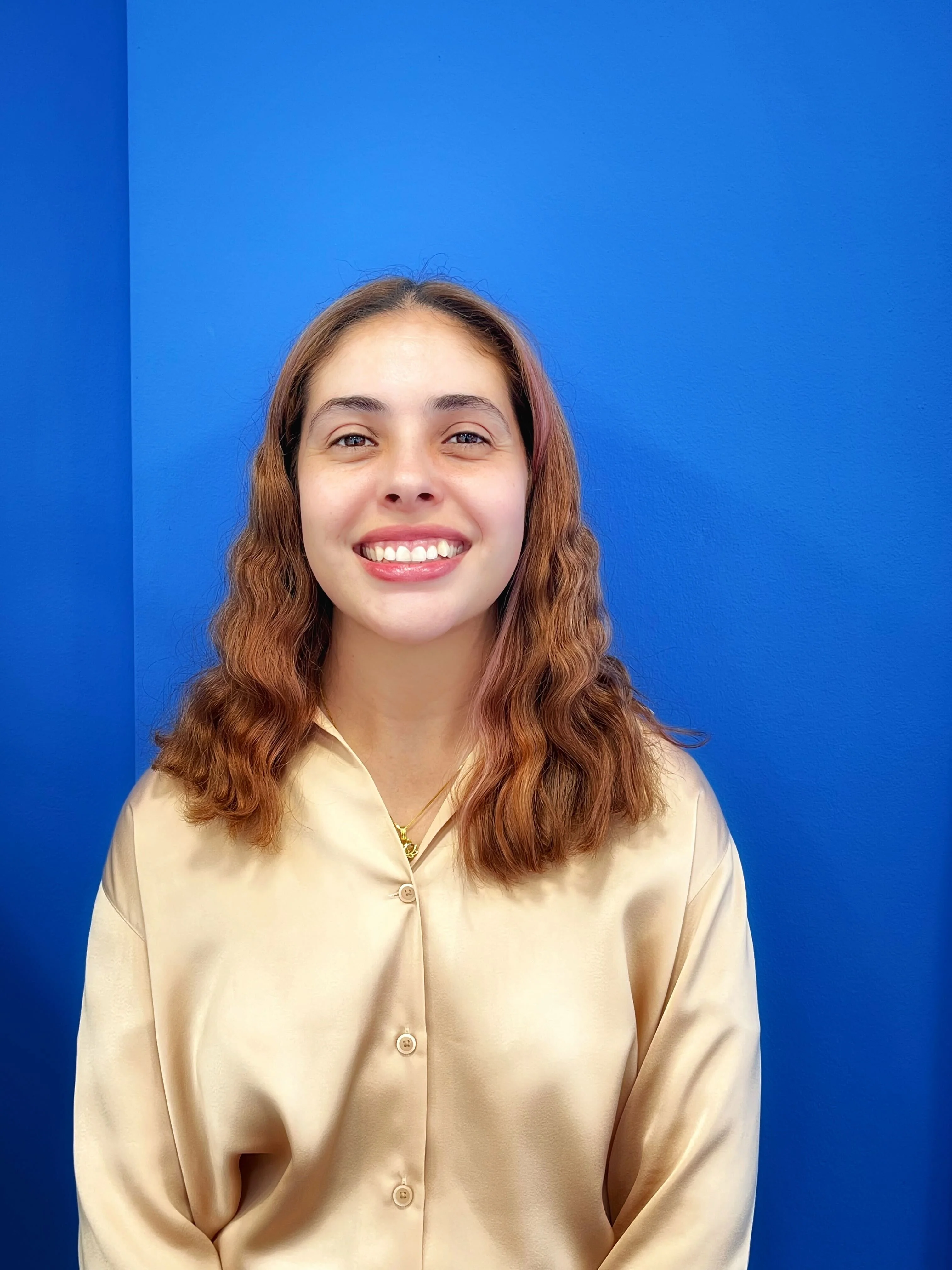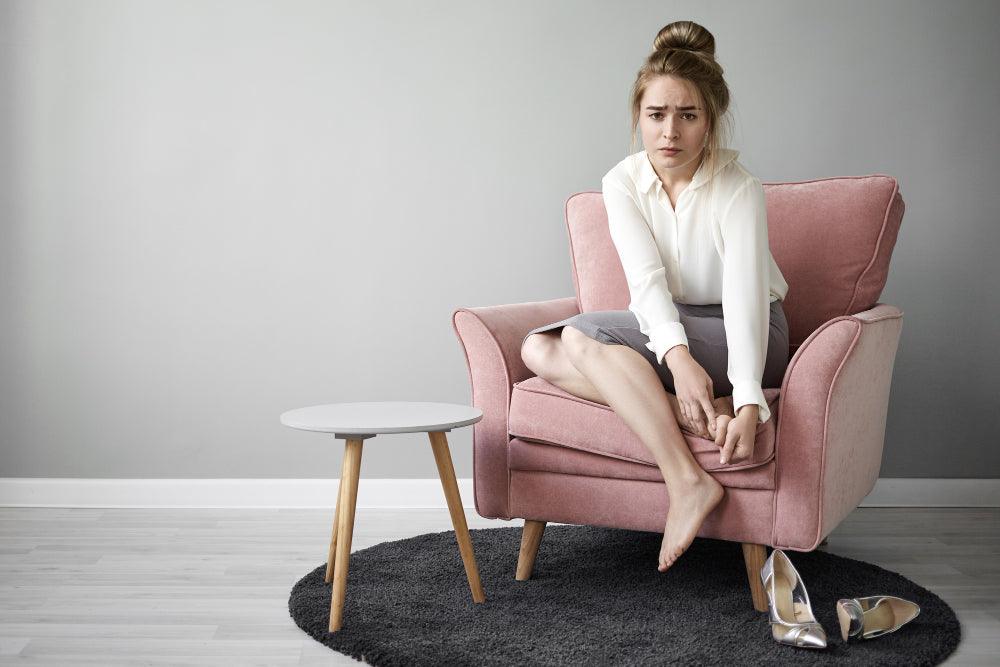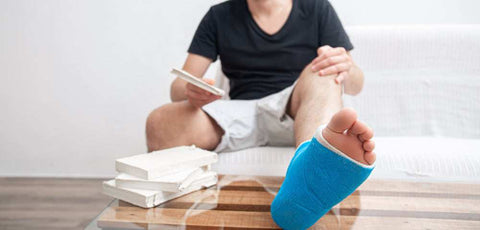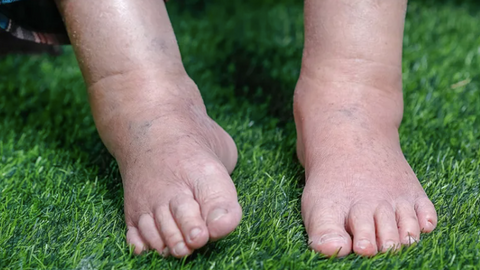Female Swollen Ankles Pictures


Related products
Female Swollen Ankles Pictures
Swollen ankles in women can serve as a barometer for underlying health conditions or routine occurrences like prolonged standing. When we delve into female swollen ankles pictures, the diverse range of visuals reveals the complexity of the issue. This article seeks to explore this in depth, offering insights from experts and shedding light on various facets of the problem.
Swollen ankles, especially in females, paint a picture of various health scenarios. "Swelling of the ankles can often be a first visual clue to underlying health conditions, but it's vital not to jump to conclusions without understanding the breadth of possible causes," as stated by Dr Alisha Thompson, a renowned rheumatologist.
Female swollen ankles pictures are important to help recognise any potential health conditions and helps people be empowered to seek help.
What are the Causes of Swollen Ankles in Females?
The main causes of swollen ankles in females include injury, pregnancy, venous insufficiency, heart failure, kidney disease, liver disease, certain medications, lymphedema, blood clots, infections, and prolonged standing or sitting.
Understanding the cause behind the appearance in female swollen ankles pictures is crucial. It's not just about the aesthetics, but the stories these images convey about the patient's health. In many female swollen ankles pictures, common occurrences like injuries or pregnancies are often the culprits.
Common Conditions
Common conditions causing swelling of the feet in females include pregnancy-induced fluid retention, venous insufficiency where veins fail to pump blood efficiently, heart or kidney diseases leading to fluid accumulation, and the prolonged standing or sitting that impedes proper circulation. Medications and lymphedema can also contribute to foot swelling.
"The majority of ankle swellings are due to trauma, such as sprains or strains. But it's crucial to differentiate between a simple sprain and other causes," explained by Dr Isabella Martins, an orthopaedic expert.
Pregnancy is another common cause. The increased weight and fluid retention during pregnancy often lead to swelling. "Nearly 75% of pregnant women experience some form of oedema, particularly in the ankles," highlights Dr Lillian White, a gynaecologist.
Medical Conditions
The myriad of female swollen ankles pictures can also point towards more severe medical conditions. Venous insufficiency, where veins struggle to send blood from the legs back to the heart, is a significant cause.
"In cases of chronic venous insufficiency, the blood pools in the legs, leading to swelling. Over 30% of women over 50 might experience some degree of this condition," explained by Dr. Jake Hammond, cardiologist.
Other conditions like heart failure, kidney or liver disease, and side effects of medications can also manifest as ankle swelling. The visual representation of these conditions in images is paramount for early detection and intervention.
Pictures of Swollen Ankles in Females
When examining female swollen ankles pictures, it's essential to decode the story each image tells. The varied appearances often dictate the underlying cause.
Injury or Trauma-Related Swelling

This category of female swollen ankles pictures often showcases blueish bruises, redness, or an apparent deformity. The visual narrative hints at trauma, making it essential for medical professionals to ascertain the damage's extent.
Pregnancy-Related Swelling

Images in this category often feature a bilateral and symmetrical swelling. The puffiness, as represented in these pictures, gives pregnant women a clear understanding of what to expect and when to seek medical help.

Medical Condition-Related Swelling
Below is perhaps the most perplexing category. The female swollen ankles pictures here can range from pitting oedema seen in heart failure to the non-pitting swelling in lymphedema. The visual complexity reinforces the need for expert consultation and diagnosis.


What are Symptoms Associated with Swollen Ankles?
Beyond the appearance in female swollen ankles pictures, the associated symptoms tell a tale of their own and include pain, stiffness, redness, and changes in skin texture all intertwine to create a mosaic of clinical presentations. Symptoms associated with swollen ankles include:
Pain or Tenderness: The affected area may be sore to touch or when weight is applied.
Stiffness: Restricted range of motion or difficulty moving the ankle joint.
Redness or Warmth: The skin around the swollen area might appear reddened and feel warmer than surrounding areas.
Pitting Edema: When pressure is applied to the swollen area, it leaves a dimple or indentation in the skin for a few seconds to minutes.
Changes in Skin Colour or Texture: The skin might appear shiny, stretched, or discoloured.
Weight Gain: In cases of systemic fluid retention.
Other Fluid Retention Signs: Such as swollen abdomen or puffiness of the face and hands.
Symptoms of Underlying Cause: If the swelling is due to an underlying condition, there may be other associated symptoms, such as shortness of breath in heart failure or reduced urine output in kidney disease.
What are Treatments and Management of Swollen Ankles?
Once the cause behind the female swollen ankles pictures is ascertained, the next step is effective treatment. From lifestyle changes like elevating the legs to medical interventions such as diuretics, the treatment spectrum is broad.
Lifestyle Changes
Elevation, compression stockings, and reducing salt intake can significantly alleviate swelling. "Simple interventions can sometimes make a world of difference in managing ankle swelling," remarks Physiotherapist Dr Natalie Stevens.
Medical Treatments
The realm of medical treatments is vast. Depending on the cause discerned from the female swollen ankles pictures, treatments like diuretics or even surgeries can be employed.
Prevention Tips
While female swollen ankles pictures serve as a diagnostic tool, prevention remains the best strategy. Maintaining a healthy weight, wearing supportive footwear, and staying active can deter the onset of swelling.
People Also Ask
What products help with swollen feet and ankles?
For swollen feet, several products and approaches can provide relief:
Compression Stockings or Socks: These apply pressure to the legs and feet, helping to reduce swelling and improve circulation.
Elevation Pillows: Specially designed pillows can elevate the legs to promote fluid drainage from the feet.
Cooling Gels and Creams: Over-the-counter gels and creams can provide temporary relief from swelling and discomfort.
Diuretics (Water Pills): Prescribed by a doctor, they can help reduce fluid accumulation in the body. However, they should be used under medical supervision due to potential side effects.
Massage Devices: Foot massagers or rollers can stimulate circulation and reduce swelling.
Orthotic Insoles: While not directly addressing swelling, they can provide support and relieve pressure points, which can be beneficial if swelling causes pain or discomfort.
Foot Baths with Epsom Salts: Soaking feet in a foot bath with Epsom salts can sometimes alleviate swelling and provide relief.

Buy Westlab Dead Sea Salt 1kg Online
Anti-inflammatory Medications: Over-the-counter medications, such as ibuprofen, can help reduce pain and inflammation associated with swollen feet.
What illness is associated with swollen ankles?
Swollen ankles can be associated with various illnesses, including:
Heart Failure: Inadequate heart function can lead to fluid accumulation in the lower extremities.
Kidney Disease: Reduced kidney function can cause fluid retention throughout the body.
Liver Disease: Conditions like cirrhosis can lead to fluid buildup in the lower limbs.
Venous Insufficiency: Veins in the legs fail to send blood back efficiently to the heart, causing pooling and swelling.
Deep Vein Thrombosis (DVT): A blood clot in a deep vein, often in the leg, can cause swelling around the area.
Lymphedema: A blockage in the lymphatic system prevents lymph fluid from draining properly, leading to swelling.
Peripheral Edema: A general term for swelling in the limbs due to various causes, including medications, infections, or other underlying conditions.
Does drinking water reduce swollen ankles?
Drinking water paradoxically can help reduce swollen ankles in some cases, especially when the swelling is due to certain types of fluid retention. Here's how it works:
Promotion of Kidney Function: Drinking adequate water supports kidney function, helping them flush out excess salt and toxins from the body, which in turn can reduce fluid retention.
Reduction of Salt Concentration: Consuming enough water can dilute the amount of salt present in the body, particularly if one's diet is high in sodium. Excess salt can promote fluid retention.
Improvement in Circulation: Adequate hydration can aid in blood circulation, potentially reducing the chances of fluid pooling in the extremities like the ankles.
However, it's essential to note:
If the swollen ankles are due to certain medical conditions, such as heart failure, kidney disease, or liver disease, increasing fluid intake without medical guidance could exacerbate the issue.
If someone suspects their swollen ankles are a symptom of a medical condition or if they are taking medications that affect fluid balance, they should consult with a healthcare professional before making significant changes to their fluid intake.
Conclusion
Female swollen ankles pictures serve as more than mere images. They are a gateway to understanding health, prompting early interventions and promoting overall wellbeing.
Swollen ankles, though common, can be indicative of a myriad of underlying conditions ranging from temporary situations like prolonged standing to serious health concerns like heart or kidney disease. Recognising the associated symptoms and understanding the potential treatments and management strategies is paramount.
Always consult with a healthcare professional for a comprehensive evaluation and tailored advice. Early intervention and appropriate management can alleviate discomfort and address root causes effectively.


















 Rated Excellent by 26,523+ Reviews
Rated Excellent by 26,523+ Reviews